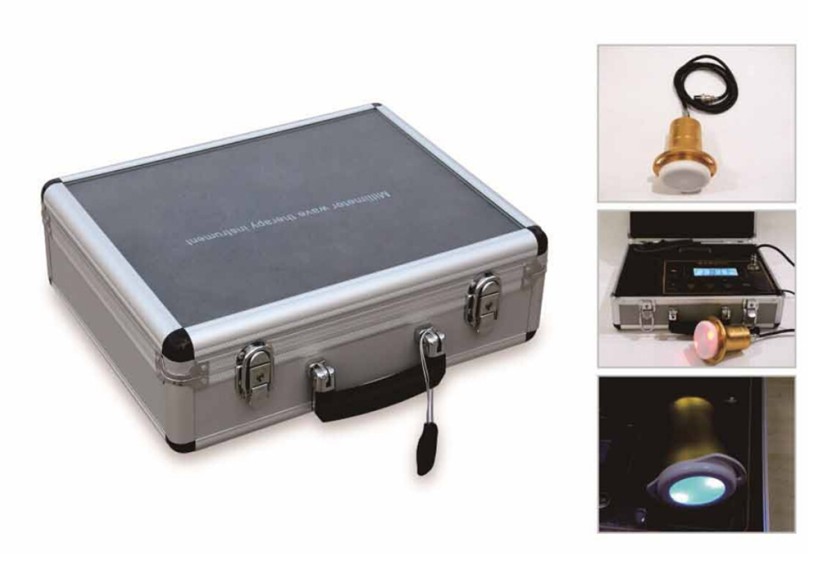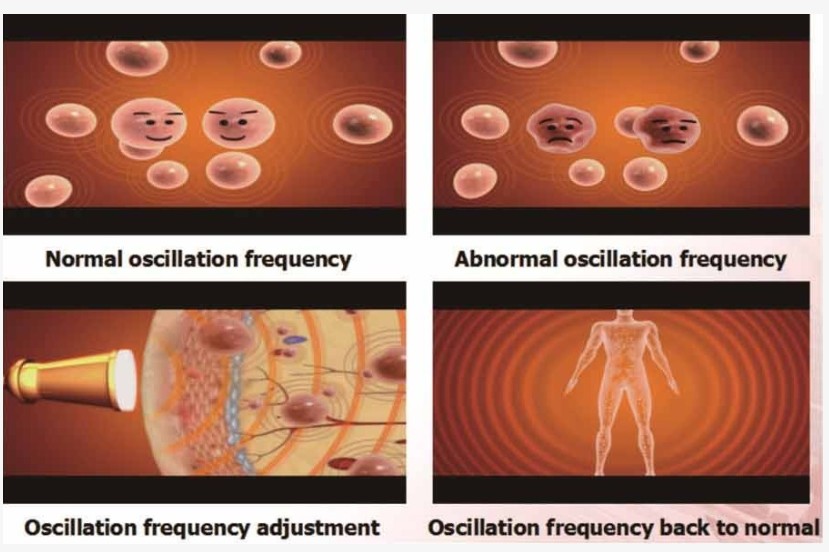Seven major advances in the field of genetic testing
1. MIT and Harvard University's “Multi-Genetic Risk Score†technology predicts the risk of five serious diseases
Scientists at the Massachusetts Institute of Technology and the Broad Institute at Harvard University have said they have developed a genomic screening tool that predicts the risk of breast cancer, type 2 diabetes, coronary artery disease, atrial fibrillation and inflammatory bowel disease. Identifying these high-risk groups helps to provide individualized preventive care. The Broad team worked with researchers at Massachusetts General Hospital (MGH) and Harvard Medical School to develop a method for assessing disease risk based on data from five existing conditions and genetic mutations. For each disease, they used an algorithm to combine all relevant genetic mutations into a single risk score. They then obtained genomic data from more than 400,000 people stored in the UK Biobank and used these algorithms to predict the risk of each person suffering from these diseases. The technology, called the "Multigene Risk Score," found that 8% of people in the UK's biological bank were three times more likely to have coronary artery disease than others. It also found that 1.5% of people in the biobank had a threefold increase in the risk of breast cancer. The research results were recently published in Nature Genetics.
2. GeneNews and LifeXTM collaborate to advance the clinical application of early liquid diagnostic techniques for "liquid biopsy"
On August 15th, GeneNews Limited, an innovative company in the field of liquid biopsy, announced a partnership with LifeXTM, based in Pittsburgh. The two companies will work together to advance a variety of proprietary early cancer diagnostic medical applications to improve patient compliance with cancer screening and to bridge the diagnostic gap in current cancer screening. GeneNews has tested and proven in thousands of patients that early detection of cancer can be achieved using a simple liquid biopsy. These tests are part of the AristotleTM platform, based on GeneNew's proprietary mRNA Sentinel Principle technology, which produces highly sensitive multi-gene detection tests for a variety of diseases. GeneNews is currently developing a genetic testing test to monitor 10 cancers in a single blood sample.
3. Natera and Fox Chase Cancer Center collaborate to study liquid biopsy to monitor renal cancer recurrence
Recently, Natera, the world's leading company in the field of cell-free DNA (cfDNA) detection, has teamed up with the famous Fox Chase Cancer Center in the United States to evaluate the effectiveness of the company's Circulating Tumor DNA (ctDNA) detection product, SignateraTM, in monitoring renal cancer recurrence. The study will analyze biological specimens collected and stored from 49 patients diagnosed with renal cancer, including the cancer recurrence group and the non-recurrent group after 3 years or longer. The study will assess whether Natera's Signatera products based on next-generation sequencing technology (NGS) can be used to distinguish between recurrent and non-recurrent kidney cancer cases. There are currently few data on ctDNA in renal cell carcinoma, and existing methods have limitations in sensitivity and specificity. This study will explore a new approach to diagnose renal cancer recurrence and monitor treatment response. By using Signatera analysis to determine the relationship between renal cancer genetic characteristics and prognosis (including recurrence), it is expected that early detection of cancer recurrence, assistance in treatment decisions, determination of treatment effects, and assessment of intervention needs are expected to improve patient care.
4. Seq2Know launches high cholesterol gene test
Recently, consumer genetic testing service company Seq2Know has released a familial hypercholesterolemia (FH) test product. This test included sequencing of four important genes responsible for FH (LDLR, APOB, PCSK9, LDLRAP1). FH is a hereditary high cholesterol disease that increases the risk of heart disease and stroke, the first and fifth leading causes of death in the United States. About one in six adults have high cholesterol. Although more than 30 million people may have FH, many are not aware of their risks. The FH Foundations' consensus statement on FH gene testing suggests that genetic testing as a diagnostic method can help prevent cardiovascular diseases associated with FH. Genetic testing is especially important for patients with persistent high cholesterol, early heart attack or a family history of high cholesterol or early onset heart disease.
5. IncellDx introduces liquid biopsy product - PD-L1 CTC test kit
IncellDx is an industry-leading single-cell cancer diagnostic company that recently introduced a complete pre-optimized kit for identifying, counting and quantifying PD-L1, an important tumor therapeutic target on circulating tumor cells (CTCs). As the company's first new reagent for cell liquid biopsy, BioINKTM accurately detects protein or mRNA expression in a single cell with high sensitivity and specificity. The company said that the ability to recognize and identify tumor cells at the individual cell level will help achieve early detection and treatment of cancer.
6. A review of the "Application of IDH Mutations in Brain Tumors" was published in Cancer Cell.
Recently, a review article on "The biological role and therapeutic potential of IDH mutations in cancer" was published in the authoritative international academic journal Cancer Cell. The paper was written by a visiting professor at Duke University, Dr. Yan Hai, co-founder and chief scientist of Genetron Health, and the Robert Tisch Brain Oncology Center at Princeton. This paper analyzes in detail the preclinical and clinical studies of IDH inhibitors in patients with glioma and acute myeloid leukemia (AML), and other possible alternative therapies and immunotherapy for patients with tumors carrying IDH1 / 2 mutations. Through extensive preclinical and clinical evidence, the development and validation of IDH mutation therapy strategies is important and will provide patients with future therapeutic benefits. The IDH1/TERT gene mutation detection kit developed by the pan-child study was approved by the CFDA in December 2017. It is suitable for the clinical detection of IDH1/R132H mutation in tumor tissues of glioma patients, and can provide an important reference for the pathological classification of glioma.
7. Thermo Fisher cooperates with Tongshu Bio to accelerate the development of tumor gene detection products
On August 10th, Thermo Fisher Scientific, the world leader in science services, and Shanghai Tongshu Biotechnology Co., Ltd. announced a formal strategic partnership. The two companies will cooperate in the field of oncology diagnosis based on the ABI & Ion Torrent platform of Thermo Scientific, and work on the development of tumor-associated diagnostic products to accelerate the implementation of tumor gene detection services in China's clinical tumor market, thereby better benefiting all of China. Cancer patients. Tongshu Bio will develop a tumor-associated diagnostic product based on Thermo Scientific's ABI&Ion Torrent platform, and Thermo Scientific will also set up a technical team for the docking of Tongshu Bio-R&D to help its product development. Thermo Scientific's new Ion Torrent Oncomine Lung cfTNA (cell-free Total Nucleic Acid) Research Assays is a next-generation sequencing method for high sensitivity and multi-biomarkers. It detects free DNA and RNA in the blood and provides customers with simple, stable and reliable multiplex PCR-based library construction reagents. Markers encompassing lung cancer include ALK, RET and ROS1 fusion mutations, copy number variation, MET gene 14 exon skip deletion, and other SNV and Indels. It accurately detects low frequency mutations and the cfTNA detection limit is as low as 0.1%.
The National Standard Material Resource Platform is mainly engaged in chemical reagents (high-end reagents, general reagents, analytical reagents), standard products, reference materials, experimental chromatographic consumables, instruments and other nearly 200,000 kinds of goods. Another biobw.com agent introduces well-known suppliers at home and abroad, from quality inspection, commodity storage management, professional preservation, logistics and transportation, after-sales service, etc., all the links are controlled by professionals. Through online operation and self-delivery logistics, the 3%-5% of the cost saved will be returned to the customer to ensure the high quality and low price. Imported brands include American ACC, US USP, German DR, German weitge, Canadian TRC, Canadian CDN, BEPURE and other well-known brands, with short delivery time and low price. Click on the online customer service to inquire about the purchase.
Http://
Millimeter Wave Therapy Machine
What is Millimeter wave therapy?
Millimeter wave is 1-10mm electromagnetic wave, it is equal to frequency range 300GHZ-30GHZ, it is a low power, short wavelength, high frequency electromagnetic wave and locates in interchange of the light wave, also called extremely high frequency electromagnetic wave.
Millimeter wave electro-magnetic therapy is supplemented by way of energy through the meridians, body fluid pathways, neural pathways, to regulate patient immune system.

Millimeter wave application:
Millimeter wave is a kind of green therapy that is safe effective and non-toxic side effects, its unique [Electromagnetic resonance theory of coherent oscillation"and Non-thermal remote effect", have obvious effect on the biological macromolecules, cell and visceral organ, can promote the growth of hematopoietic cell, improve the body` s immune system function, promote tissue repair regeneration, promote inflammation absorption and ulcer healing, coordinate the body`s physiological function by the resonance effect of oscillation frequency, thus get a significant biological effects.

Millimeter wave Therapy Machine Main functions
1. Non-thermal effects
Millimeter does not treat diseases via increasing body temperature. In the treatment of diseases, no thermal, no pain, no simulation, an internationally recognized green therapy.
2. Distal effects
Millimeter wave can be conducted through the inter-cell, neural, humeral, an other means of the meridian through the irradiation point on the biological activity, or even the effect of the body up to the depth of the lesion.
3. The cumulative effect of time
Millimeter-wave of cell repair and adjusting will take some time, with the increase in the number of treatments:the more intense the millimeter-wave effect on the biological effects of the body, the treatment effect is more obvious.
Millimeter-wave therapy can be applied to many special occasions, either as a single therapy, or combined with a variety of other medical methods for safe usage.
Millimeter Wave Therapy,Millimeter Wave Therapy Machine,Wave Therapy Machine,Millimeter Therapy Machine
Shenzhen Guangyang Zhongkang Technology Co., Ltd. , https://www.szlighttherapymachine.com